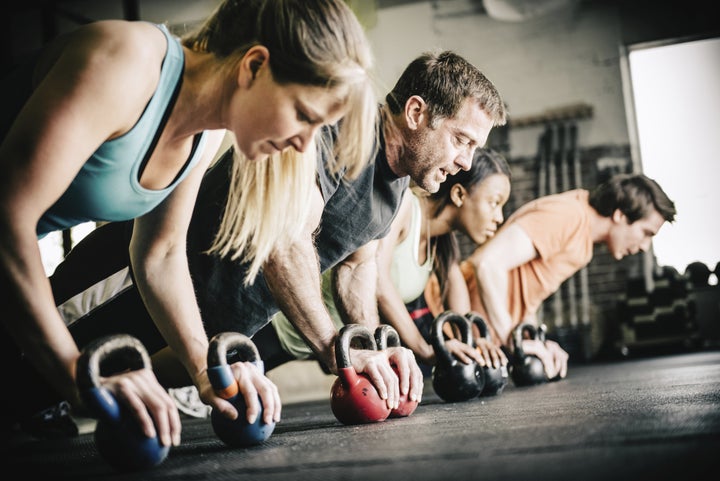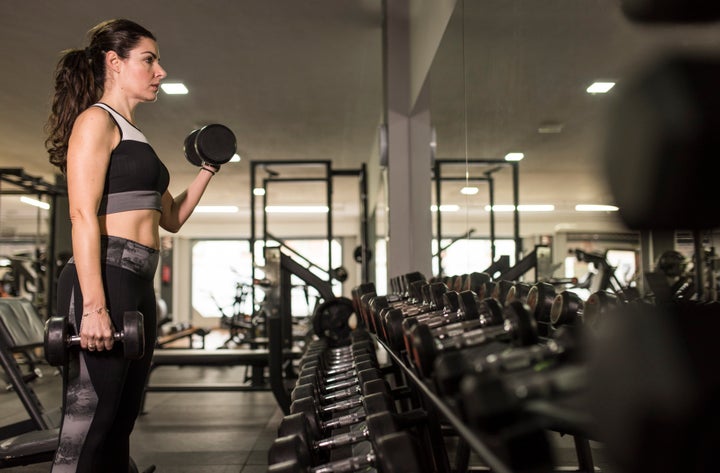
You’ve signed up to the gym and now all you can think about is the buff body that awaits. But while keeping your eye on the prize is a good way to stay motivated, you’ll never achieve those elusive fitness goals if you end up being out of action from a strain, sprain or some other workout-related injury.
Taking a measured approach with a gentle, incremental exercise programme – one that crucially factors in plenty of downtime – is the key to building muscle and strength, safely and consistently.
Julia Buckley, personal trainer and founder of online gym juliabuckleyfitness.com shares her top tips on how to reach your training goals, without falling foul of injury along the way.
Perfect your technique
“The majority of injuries in strength training are a result of performing exercises with bad technique, so the most important thing to focus on is making sure your form is good,” says Buckley.
So, how can we tell if our technique is correct? “Ideally, heavy weight lifting should be done under the supervision of a qualified trainer, at least while you master the exercises. But if you don’t have access to a trainer just be sure you fully understand how to perform the lifts properly and do them in front of a mirror so you can check everything is positioned where it should be – it’s really hard to know unless you can see yourself.”

Know your limits
All that grunting and groaning and posturing in the mirror can make for a culture of competitiveness in the gym. But push yourself too hard and you could end up groaning for all the wrong reasons.
“Trying to lift weights that are too heavy for your current level of strength is a big factor when it comes to injuries – and this really comes back to technique as well,” says Buckley. “Lifting weights that are a very challenging is necessary to get stronger, but if the weight is so heavy you can’t maintain the right posture and move in the correct way, that’s when you’re going to get injured.”
Build in recovery time
Ironically, muscle isn’t built in the gym – its built during your downtime while you’re recovering. So tempting as it might be to throw yourself into an intensive training schedule, you simply won’t get the results you desire without plenty of recovery time factored in.
“Overtraining, whether it’s not getting enough rest to allow your muscles to adapt to the training load, or repeating the same exercises too much, can lead to injury and illness,” explains Buckley. “How much rest you need will very depending on a large range of factors, including your training load, fitness levels, age, training background, diet, stress levels, how active you are in general, and more.”

Follow a well-balanced programme
When it comes to getting in shape, it can be all too easy to channel your focus into the areas you want to change, but Buckley warns of the dangers of a programme that’s too targeted. “Even if you’re only really excited about building muscle in a particular target area or improving your performance in a particular exercise, you need to train the rest of your body too because building up muscles in an isolated area while neglecting everywhere else can affect your posture and movement patterns, again putting you at increased risk of injury.”
She adds: “Plus, remember that all the muscles of the body are connected and even in exercises that focus on a small area, other muscles right across the body are needed to support the movement.”
Respect your body
Keeping your body in great condition is crucial if you want to avoid injury, and there are plenty of simple steps you can do to achieve that, both inside and outside of the gym. “Take care of your body with good nutrition,” says Buckley. “Stretching and mobility exercises may also help, as well as regular self-massage with tools like foam rollers or massage balls. Keeping your stress levels low and generally being mindful of how your body is feeling are all very important.”
But what about the old mantra, ‘No pain, no gain’? “No exercise should ever painful,” she warns. “Tough is fine and a bit of muscle soreness after a challenging training session is to be expected. But actual pain is a sign that what you are doing is damaging the body, this will not help you get stronger, so stop and consult an expert to find out what was causing the pain before attempting the exercise again.”